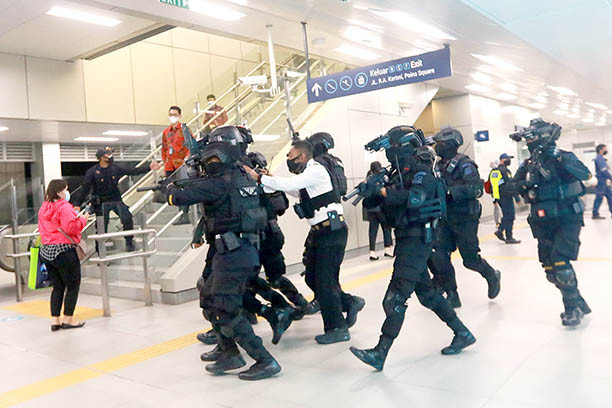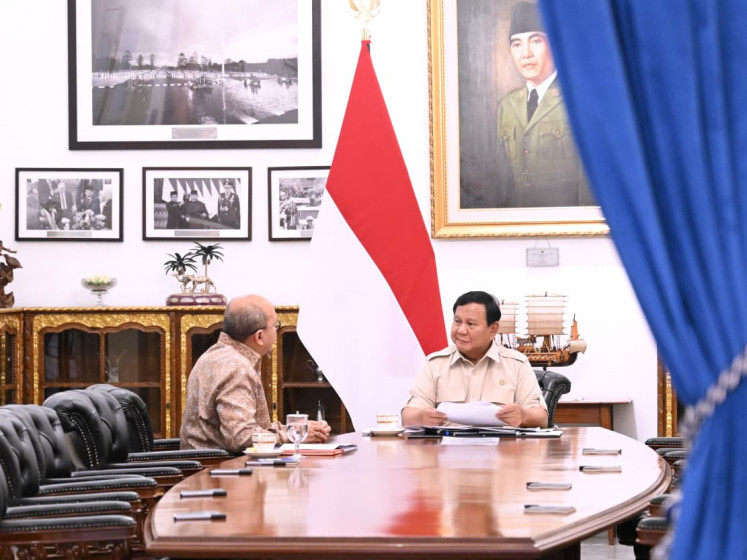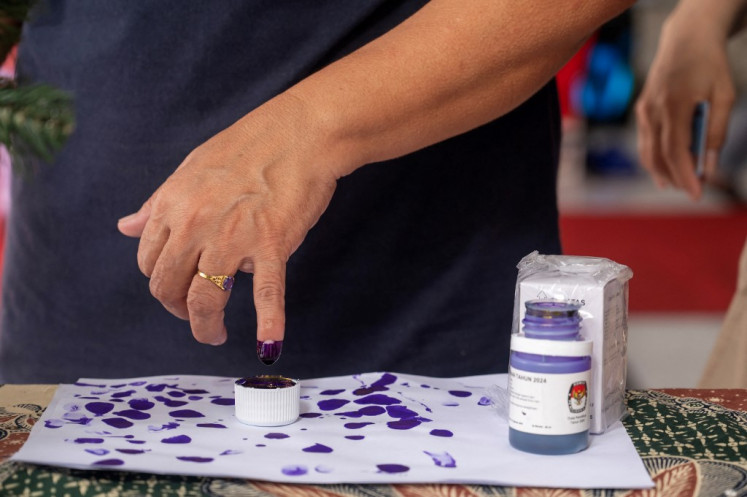Popular Reads
Top Results
Can't find what you're looking for?
View all search resultsPopular Reads
Top Results
Can't find what you're looking for?
View all search resultsProtecting youths from radicalization: Religious moderation must be embedded in education
Religion is an inherent part of Indonesian society and culture, so religious moderation must also be an inherent part of national education.
Change text size
Gift Premium Articles
to Anyone
Z
akiah Aini’s lone wolf attack on the National Police headquarters in South Jakarta last week highlights the growing role of youth in terrorism. Police shot dead the 25-year-old, who family and acquaintances said was “shy”, and who carried out the attack with an airsoft gun.
This is the latest in the police’s crackdown on suspected terrorists and terrorist activities, which has resulted in 1,773 arrests nationwide since 2018.
The involvement of youth in terror attacks around the world is not new. Young women in particular are often used to deliver secret messages and carry out violent attacks, including suicide bombings. It is believed they arouse less suspicion and so can get closer to their targets.
But any violence that involves youth rattles our conscience as to how youthful vibrancy and idealism could transform into unimaginable murderous acts, which could potentially shake up the establishment and threaten the public.
Youth groups often play important roles in turbulent times, as we can see from our own history: It was our youths who bravely changed the course of the archipelago toward Indonesian independence in 1945, and toward democracy in 1998. When they are part of a broader social movement, they can be very militant and strongly influence their age cohorts in the movement’s development.
Depending on the perspective, their actions can be deemed as either heroic or its opposite. But what Aini did was very far from a heroic act; it was gravely unacceptable from the perspective of basic humanity. She also destroyed her future and her family’s hopes.
Youths usually have a need to define themselves and their identities: some seek recognition and status, others seek adventure, and still others seek a group to join.
In the case of Aini, she found Islamic State (IS) as an organization that could help define herself. But IS is not just an organization; it is an ideology and a global brand that spins a “heroic narrative” in what followers perceive to be an idealized version of Islamic world order. Not surprisingly, Aini posted a picture of an IS flag on her Instagram account just a couple of hours before she attacked the police headquarters.
It is believed she had been radicalized some time before her death through meetings with IS supporters and would-be jihadists both in person and online.
How are radical groups recruiting youths? The United Nations has identified several methods: forcible recruitment, community leaders, economic enticement, schools, propaganda and online.
These methods can intertwine in practice, and recruiters also use all other possible means to do their job.
Hence, the danger is real and tangible. What can we do?
The efforts must focus on early intervention rather than responding after the fact, and this requires all stakeholders to work hand in hand. We cannot rely solely on the National Counterterrorism Agency (BNPT), which focuses more on deradicalization.
But the deradicalization program has received much criticism, as it seemed to strongly portray certain segments of society, particularly Muslims, as already radicalized and therefore they needed to be “fixed” by deradicalizing them.
Moderate Islamic organizations such as Muhammadiyah and Nahdlatul Ulama have proposed that what they call “religious moderation” should be instilled in environments and the education ecosystem where youths undergo cognitive, affective and psychomotor development, such as Islamic boarding schools, regular schools, their communities and at home.
The Religious Affairs Ministry has formally adopted this stance and defines religious moderation as “religious views, behavior and practices in living together, by embodying the essence of religious teachings that protect human dignity and develop the common good based on the principles of fairness, balance and obeying the Constitution as a national agreement”.
The Education and Culture Ministry has chosen the term Pelajar Pancasila (student of Pancasila) in reference to the state ideology, in the hope that students will internalize and implement Pancasila values, which promote tolerance and inclusiveness, in their day-to-day lives.
But much needs to be done to create an educational ecosystem that is conducive to building a truly tolerant society and prevent youths from becoming radicalized by extremist ideas and ideologies.
Since religion is strongly and historically embedded in Indonesian society, it is imperative that moderate religious life is an inherent part of the education system as a whole, not only in religious schools, but also in regular schools.
Extracurricular programs can involve broad-minded local religious figures and carefully designed with moderate religious activities that promote pluralism, tolerance and respect for humanity. These activities can be blended with projects that are creative, enjoyable, challenging and enriching, and which also fulfill the psychological and pedagogical needs of youths to help them define themselves.
***
The writer is the director of the Southeast Asian Ministers of Education Organization’s Regional Open Learning Centre (SEAMOLEC) and an education lecturer at Sultan Ageng Tirtayasa University in Serang, Banten.










